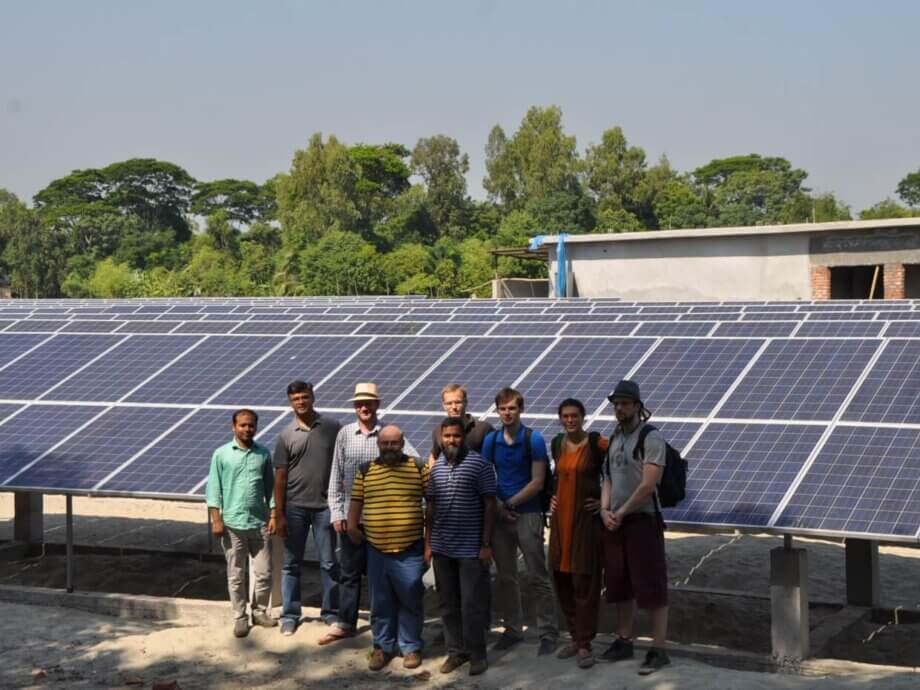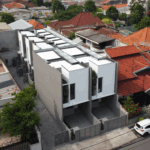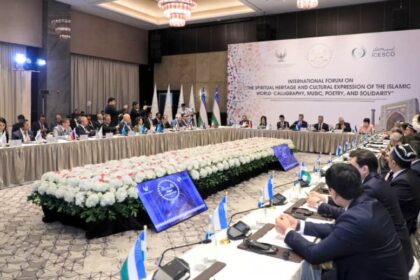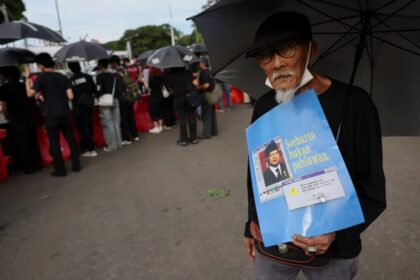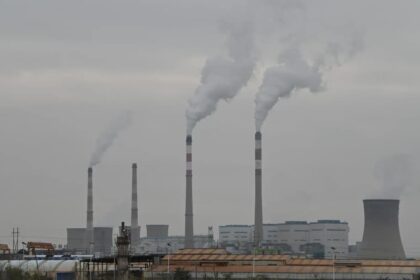Bangladesh Approves Ambitious Renewable Energy Policy Amid Calls for a Clearer Roadmap
Bangladesh has officially approved its new Renewable Energy Policy 2025, a landmark update to a 17-year-old framework aimed at drastically shifting the nation’s energy landscape. The policy, which received the nod from the Advisory Council, sets ambitious targets to generate at least 20% of the country’s electricity from green sources by 2030 and 30% by 2041. To achieve this, the government is rolling out a suite of aggressive financial incentives, including a decade-long corporate tax exemption for renewable energy producers and waivers on import duties for essential components. However, while the policy signals a significant step towards a sustainable future, it has been met with a mix of cautious optimism and sharp criticism from energy experts, civil society groups, and international observers who warn that ambitious targets alone are insufficient without a concrete, actionable implementation plan.
- Bangladesh Approves Ambitious Renewable Energy Policy Amid Calls for a Clearer Roadmap
- A New Framework for Green Energy: What the Policy Proposes
- A History of Missed Targets: Why Experts are Cautious
- The Billion-Dollar Question: Financing the Transition
- Building the Future: Technology, Infrastructure, and International Support
- In Summary
The new policy aims to reduce dependency on volatile fossil fuel markets, lower electricity prices, and bolster energy security for one of the world’s most climate-vulnerable nations. It introduces modern energy market mechanisms and empowers a wider range of participants, from large corporations to individual homeowners. Yet, the central challenge remains: transforming these well-intentioned goals into tangible megawatts on the national grid, a feat previous policies have failed to accomplish. The debate now centers on whether this new policy has the teeth to overcome historical inertia and the structural hurdles that have long hindered Bangladesh’s green transition.
A New Framework for Green Energy: What the Policy Proposes
The Renewable Energy Policy 2025 represents a comprehensive overhaul of the country’s approach to clean energy. It moves beyond broad statements of intent to establish specific mechanisms designed to attract investment, foster innovation, and decentralize power generation. The core objective is to create a vibrant, competitive market for renewables that can scale rapidly to meet the nation’s growing energy demands.
Financial Incentives and Investment
At the heart of the policy is a robust package of financial stimuli designed to de-risk investments and attract both domestic and foreign capital. All government and private renewable energy producers will be granted a full corporate tax exemption for the first 10 years of operation, followed by a partial exemption for another five years. This is complemented by a proposal to exempt renewable energy components and their raw materials from import duties and Value-Added Tax (VAT), a move intended to lower the upfront cost of projects. Furthermore, the policy introduces incentives for carbon trading, with potential income tax exemptions on revenue earned, creating another potential revenue stream for green projects.
Empowering Consumers and Decentralizing Power
A significant innovation in the 2025 policy is its focus on decentralization. For the first time, all types of customers—residential, industrial, and commercial—are explicitly encouraged to set up their own renewable energy systems on rooftops or premises. Through the existing Net Metering Guidelines, they can sell any surplus electricity back to the grid. The policy also champions peer-to-peer (P2P) trading, a decentralized model that allows consumers with solar panels to directly sell excess electricity to other consumers using the distribution network. For remote areas where extending the national grid is not feasible, the policy promotes the development of solar mini, micro, and nano-grids, which can be operated by both public distribution companies and the private sector on a competitive basis.
Regulatory Framework and Governance
To ensure compliance and drive adoption, the policy introduces several key regulatory tools. A Renewable Purchase Obligation (RPO) will be mandated, requiring all power utilities and other designated entities to source a certain percentage of their electricity from renewable sources. To facilitate this, a market for Renewable Energy Certificates (RECs) will be established. Each REC represents the environmental attribute of one megawatt-hour (MWh) of green electricity, creating a tradable commodity that allows obligated entities to meet their targets. The Sustainable and Renewable Energy Development Authority (SREDA) is designated as the central nodal agency, tasked with coordinating all renewable projects, developing a detailed implementation roadmap, promoting local manufacturing of equipment, and establishing a national quality control laboratory to ensure the reliability of imported and locally produced components.
A History of Missed Targets: Why Experts are Cautious
Despite the policy’s ambitious scope, a deep-seated skepticism pervades the expert community, rooted in Bangladesh’s history of failing to meet its renewable energy goals. The first Renewable Energy Policy, formulated in 2008, aimed for 5% renewables by 2015 and 10% by 2020. Subsequent targets in the 7th and 8th five-year plans also fell short. As of 2024, renewable energy accounts for only about 5-8% of demand and less than 5% of total installed capacity, a stark reminder of the gap between policy and reality. Critics argue that without addressing the fundamental reasons for these past failures, the 2025 policy risks becoming another document of unfulfilled promises.
The Roadmap to Nowhere?
The most persistent criticism leveled against the new policy is its lack of a clear, detailed, and time-bound implementation roadmap. While it sets long-term targets of 6,145 MW by 2030 and 17,470 MW by 2041, it fails to provide annual or five-year milestones to track progress. Hasan Mehedi of the Coastal Livelihood and Environmental Action Network (CLEAN) highlights a critical flaw in the metrics. He states:
“Installed capacity doesn’t reflect the actual contribution of renewables to the grid. We need generation-based targets backed by annual and five-year roadmaps, which the draft policy completely lacks.”
This distinction is crucial. Installed capacity refers to the maximum potential output of a power plant, but factors like sunshine availability for solar or wind speeds mean that the actual electricity generated is often much lower. Critics argue that focusing on capacity can mask underperformance and a slow transition. Khondaker Golam Moazzem of the Centre for Policy Dialogue (CPD) further insists that the entire premise is flawed without a corresponding plan to phase out fossil fuels, calling it “impractical” to expand renewables in an economic framework that continues to heavily favor and subsidize conventional energy.
Policy in a Vacuum: Misalignment and Consultation Gaps
Concerns have also been raised about the policy’s formulation process and its integration with other national strategies. The draft was made available for public consultation for just 21 days, a period many stakeholders felt was insufficient for such a critical document. This has led to accusations that the policy was developed in isolation, without adequate input from civil society, analysts, and key industry players. Experts point to significant inconsistencies between the Renewable Energy Policy 2025 and other major frameworks like the Mujib Climate Prosperity Plan (MCPP), the Nationally Determined Contributions (NDC) submitted under the Paris Agreement, and the overarching Integrated Energy and Power Master Plan (IEPMP). This lack of coherence, they argue, could confuse investors, create regulatory conflicts, and ultimately undermine the effectiveness of the entire energy transition.
The Billion-Dollar Question: Financing the Transition
Ultimately, the success of Bangladesh’s green ambitions will hinge on securing massive and sustained investment. The policy’s financial incentives are a clear acknowledgment of this reality, but experts question whether they are sufficient to overcome the deep-seated financial and structural barriers. The conversation is now dominated by how to bridge the enormous funding gap and ensure that capital flows to the right projects.
Bridging the Investment Gap
While the Bangladesh Bank has expanded its green refinancing schemes, analysts like Shafiqul Alam from the Institute for Energy Economics and Financial Analysis (IEEFA) point out their limitations. A loan for a solar park, for instance, cannot exceed Tk 0.3 billion (approximately $2.5 million), which is insufficient for even a modest 10 MW project. To achieve its targets, Bangladesh must look beyond domestic sources and actively court multilateral funding, green bonds, and private equity. A major boost came with the announcement of a €1.3 billion pledge from the European Union specifically to support Bangladesh’s green energy transition. This substantial commitment from the EU is seen as a critical catalyst, but it also comes with expectations of systemic reforms and good governance. Experts at IEEFA suggest that the government should broaden its financing framework to explicitly outline its vision for utilizing these different avenues and simplify approval procedures to attract investors.
An Uneven Playing Field
A glaring disparity in the policy’s incentive structure has drawn criticism. While corporations receive generous tax holidays, ordinary citizens installing rooftop solar systems receive no direct subsidies and still face taxes of 26-56% on imported accessories like inverters. This contrasts sharply with countries like India, which offer direct subsidies of up to 30% for residential solar adoption. This could stifle the growth of the decentralized energy market the policy aims to promote. A huge, largely untapped potential lies within the Ready-Made Garment (RMG) sector, which accounts for over 80% of exports. Many factories are under pressure from international buyers to decarbonize, but face challenges with land scarcity, high inverter costs, and limited access to green finance. Experts believe that with targeted incentives and better infrastructure, the RMG sector could become a leader in the country’s renewable energy transition.
Building the Future: Technology, Infrastructure, and International Support
Looking ahead, the policy’s success will depend not only on finance and regulation but also on technological adoption, infrastructure modernization, and continued international collaboration. The framework is designed to be technologically inclusive and future-proof, embracing a wide array of clean energy sources and the systems needed to support them.
Beyond Solar: A Diversified Energy Mix
While solar power is expected to be the dominant renewable source, the policy explicitly includes a broad spectrum of technologies. These range from onshore and offshore wind, hydropower, and biomass to emerging solutions like green hydrogen, tidal and wave energy, and waste-to-energy projects. It also encourages innovative land-use solutions like agri-voltaics (combining agriculture with solar panels) and floating solar farms on water bodies to address land scarcity. To support this vision, the policy emphasizes the need to develop local manufacturing capacity for renewable energy equipment. IEEFA recommends that the government undertake resource mapping for critical minerals to assess the feasibility of a domestic supply chain and reduce import dependency.
Modernizing the Grid
Integrating large volumes of intermittent renewable energy sources like solar and wind into the national grid is a major technical challenge. A modern, flexible, and intelligent grid is essential. Recognizing this, Bangladesh is collaborating with the U.S. Trade and Development Agency (USTDA) and the Boston Consulting Group (BCG) to develop a national smart-grid roadmap. This initiative aims to automate the grid, reduce transmission and distribution losses, and improve reliability. The policy also acknowledges the critical role of battery energy storage systems, which can store excess renewable energy for use during peak demand or when the sun isn’t shining, ensuring a stable power supply.
In Summary
The Renewable Energy Policy 2025 marks a pivotal moment for Bangladesh. It lays down an ambitious and necessary vision for a clean energy future, backed by significant government incentives. However, its success is far from guaranteed. The path forward requires moving from broad policy strokes to granular, actionable plans.
- Ambitious Targets: The policy, now approved by the Advisory Council, aims for 20% renewable electricity by 2030 and 30% by 2041, updating a 17-year-old framework.
- Strong Financial Incentives: It offers a 10-year corporate tax holiday and exemptions on import duties and VAT for renewable energy components to attract investment.
- Modern Market Mechanisms: The policy introduces progressive concepts like peer-to-peer (P2P) energy trading, Renewable Purchase Obligations (RPOs), and tradable Renewable Energy Certificates (RECs).
- Major Criticisms Persist: Experts warn that the policy lacks a detailed implementation roadmap, uses potentially misleading targets based on installed capacity instead of actual generation, and was formulated with limited public consultation.
- Financing is Key: While a €1.3 billion EU pledge provides a significant boost, major gaps in financing for large-scale projects and a lack of incentives for individual citizens remain critical hurdles.
- Implementation is Everything: Ultimately, the policy’s success will depend on SREDA’s ability to create a concrete roadmap, align with other national plans, modernize the grid, and translate ambitious targets into real-world green energy for the nation.


